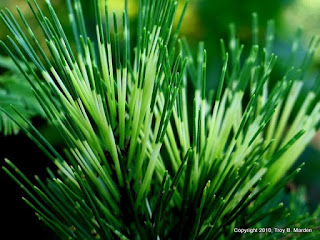Hi everyone! I thought I'd share a few photos from the garden. It has been nearly two years since I moved and as some of you know, it took all of the first year just to get the beds whipped into shape, the weeds under control and gain some sense of control over what was already here when I moved in. This second season in the garden has been devoted to details and I'm finally at a place where I'm getting plants in the ground every weekend. It isn't that I haven't planted anything at all over the past two years, I've just worked bed by bed to try and get it right the first time (yeah, right!) and keep the moving of plants later on to a minimum. Whether they eventually get moved or not, some of the plants that have been in the ground for a season or two are really settling in nicely and certain ones are really beginning to put on a show. I thought I'd share a few of the goings on in the garden with you. Hope you enjoy this little tour of some of the plant life around my garden.

Spring started off back in March with Hamamelis x intermedia 'Arnold Promise', one of my favorite witchhazels.
Flowering at about the same time as the witchhazel, Helleborus x ericsmithii 'Silver Moon' has quickly become one of my favorites.
Iris reticulata is a late winter/early spring bloomer that brightens up the gray days of winter just about the time you begin to wonder if spring will ever arrive.
Beginning in May and continuing on for well over a month is Papaver dubium, the common field poppy. I love its deeply divided, fern-like foliage and the brilliant orange blooms. It's a re-seeder, so make sure you leave the seedpods!
As I mentioned in a previous blog entry, hydrangea season was spectacular this year. This is Hydrangea serrata 'Blue Billow' in full bloom next to the garden shed.
A closeup of 'Blue Billow'. So beautiful!
One of my favorite shade plants, Symphytum x uplandicum 'Axminster Gold'. Unfortunately, it's rather hard to find.
I love milkweeds! L-O-V-E them! And this one, Asclepias variegata, is right near the top of the list. If you need a cool plant that thrives in dry shade (or part shade anyway), this is it! And the monarch butterflies like it, too.
Gladiolus papilio is a small-flowered, hardy gladiolus. I got my corms from Ellen Hornig at Seneca Hill Perennials just before she decided to close the nursery. I have at least three color forms that have flowered so far. This one has the nicest markings, but there is another that has a more open flower. The third is an entirely different color--a sort of mauve-lavender with grey undertones. Quite unusual.
I love this variegated pine, Pinus densiflora 'Oculis Draconis', the "dragon eye" pine.
One of my favorite hydrangeas, Hydrangea arborescens 'Hayes Starburst', discovered by my friend Hayes Jackson in his garden in Anniston, Alabama. This is a cousin of the popular 'Annabelle' hydrangea, but much, much more refined. It's also a lot slower to establish and needs about three seasons in the garden to really get going. It's well worth the wait!
And finally... flowering this week, Musa ornata 'Red Jewel', which has been hardy in a couple of gardens in the Nashville area in protected locations for the past 5 or 6 winters. I'm not claiming it as "hardy", necessarily, but if you site it appropriately you may get it to come through the winter. From Zone 7 south, I think it would be pretty reliable. It sure is spectacular when it flowers!
And that's what has been happening in the garden so far this year. New things continue to flower and each week I get more plants, some of which have lived in pots for more than 5 years, in the ground. Hope your summer, wherever you are (or winter if you're south of the equator!) is going well and I'll be back again soon. Happy gardening!













































